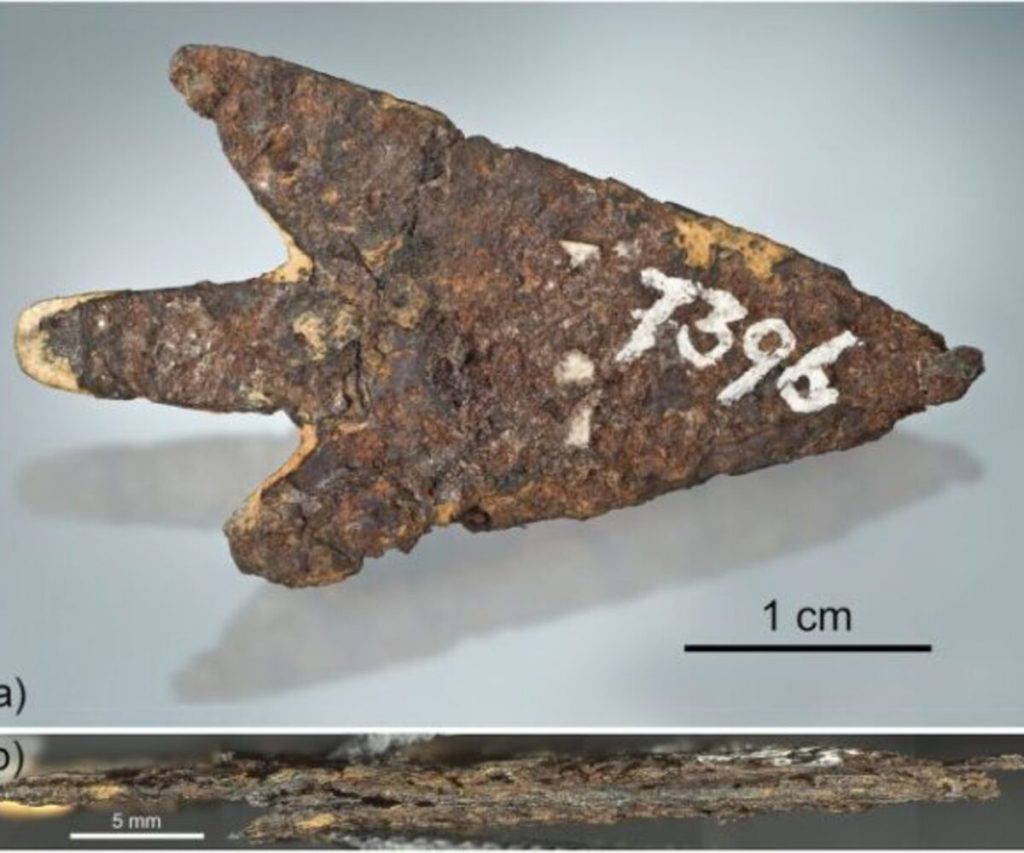In the 19th century, a fascinating discovery was made in Switzerland when archaeologists unearthed a small arrowhead from the Bronze Age, and what they found was astonishing. It turned out that this arrowhead was crafted from iron sourced from a meteorite that had fallen from the sky.
But the real twist was that this meteorite wasn’t even the closest one to the settlement at that time. Scientists speculated that it might have come all the way from Estonia, which is pretty far away.
This arrowhead’s significance goes beyond just being an ancient record of using “sky iron” before people learned how to smelt ore. It also sheds light on the vast trade networks that must have existed thousands of years ago.
The discovery was part of a broader effort led by geologist Beda Hofmann and his team from the Natural History Museum of Bern and the University of Bern. They were on the lookout for ancient artifacts made from meteoritic iron. In prehistoric times, finding pure iron was tough, so people made use of iron that fell from the heavens in the form of meteorites.
Meteorites made of iron are quite common because they can withstand the intense stress of entering the Earth’s atmosphere. They primarily contain iron, with a bit of nickel and other trace metals mixed in. It’s believed that most of the iron tools and weapons used during the Bronze Age were made from such meteoritic iron.
Though such artifacts have been found in various parts of the world, they are relatively rare in Europe. That’s what made the settlement of Mörigen in Switzerland a fantastic place to search for them. This place thrived during the Bronze Age and was quite close to the Twannberg field, which was scattered with meteoritic iron fragments.
Among the artifacts excavated at the site, Hofmann and his team stumbled upon a lone iron arrowhead. It measured about 1.5 inches in length and weighed just over 0.1 ounces. The researchers noticed traces of organic residue, which they believed might have been birch tar used to attach the arrowhead to its shaft. But what made it truly unique was its composition – a clear match with meteoritic iron, including a telltale sign of a radioactive isotope of aluminum called aluminum-26, which is only found in space.
But the most intriguing part was that the mix of metals in the arrowhead didn’t match those from the meteorites found in the nearby Twannberg field. Instead, it closely resembled a specific class of iron meteorites known as IAB meteorites.
The researchers were able to narrow down its origin based on this discovery. They found that three large IAB meteorites had fallen in Europe, and the best match for the arrowhead’s composition was the Kaalijarv meteorite from Estonia. It fell to Earth around 1500 BCE, and its fragments were ideal for reshaping into small objects like arrowheads. However, it was surprising to learn that the distance between Mörigen and Kaalijarv was around 994 miles, which suggests it might have traveled through ancient trade routes, possibly alongside Baltic amber.
The Kaalijarv meteorite’s significant impact resulted in numerous fragments, which led the researchers to hope that they might find similar objects in other collections, which could help identify the parent meteorite.
“Whether or not derived from Kaalijarv, the arrowhead most likely was not a singular object and likely other worked fragments of meteoritic iron, including samples of relatively small size, are present in archaeological collections in Europe and possibly even at larger distance,” the researchers write.

